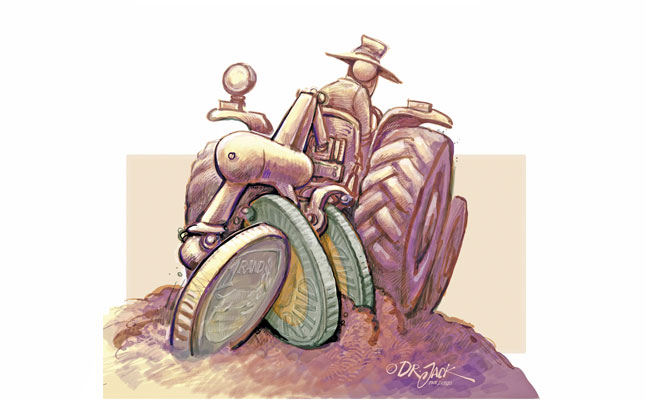
Sustainable agricultural mechanisation plays several crucial roles in production. It enables the processing and transportation of inputs and goods, increases the efficiency of operations in the value chain, and helps overcome mobility restrictions and labour shortages in rural communities.
It helps reduce poverty and contribute towards food security by increasing land productivity and income.
If appropriately adapted, agricultural mechanisation has the potential to reduce post-harvest losses, leading to increased food availability and higher incomes.
Finally, it reduces the drudgery of on- and off-farm operations, making young farmers more likely to engage in agriculture and its related businesses, such as the provision of mechanisation services.
A different approach needed
It is crucial, however, that agricultural mechanisation interventions, including projects, programmes and policies, do not repeat past mistakes, where the provision of equipment and mechanisation hire services across Africa was led by the public sector.
One reason for the failure of public sector tractor hire schemes was the public sector’s poor management of commercial ventures.
A further critical requirement is to ensure that private-sector-driven business models for mechanisation hire services are profitable, sustainable and inclusive for smallholder farmers and community members, as well as resilient to the effects of climate change.
Business models for mechanisation hire services that use digitalisation can pool the demand of smallholder farmers, increasing their attractiveness to service providers.
The following models of agricultural mechanisation hire have the potential to help small-scale farmers in Africa benefit from mechanisation without having to invest in the machinery themselves.
Model I: Individual farmer service providers
Hire service provision remains a vital service that increases farmers’ accessibility to agricultural mechanisation. It is mainly large- scale farmers who have the financial capacity to invest in farm machinery and equipment to first meet the needs of their own farms and then provide services to neighbouring farmers. This is the most widespread model, and customers are generally small-scale farmers cultivating less than an average of 1ha of land.
Mechanisation services are aimed at the entire agri-food value chain, from planting or transplanting to post-harvest, processing and transport operations. Services were traditionally paid for in kind or in exchange for a favour; it is only more recently that more business-oriented farm households have begun to charge fees for the services provided.
These hire service providers do not generally operate as businesses in their own right, but provide occasional services as opportunities arise.
This model is less conducive to innovation in hire service provision; farmers typically operate within a small radius of their location and the service is characterised by customer loyalty.
Model I continues to provide a means for small-scale farmers to access mechanisation services in rural communities; for this reason, enhancements of this model in the field are likely to come from the development of sustainable agricultural mechanisation.
Investments usually come from the farmer’s own funds and tend to be small.
The machinery and equipment are relatively simple and include small tractors, tillers and small processing units, usually acquired second-hand. Operators are often family members, but external operators are sometimes recruited.
The service providers’ primary objective is to meet their own needs before offering services to other farmers; generating a profit is not their main motivation. In periods of high agricultural activity, this can result in customer dissatisfaction.
Model II: Farmer Group service Providers
Model II comprises a group of farmers who come together principally to serve their own interests. It enables farmers to pool their resources and increase access to agricultural mechanisation services, and there are several possible forms.
Services cover all operations in the agricultural value chain, from tillage to post-harvest activities, processing and transport. Services first meet the needs of members and are then extended to neighbouring non-member farmers.
The motivation for creating these groups is not to make a profit, but to meet members’ needs in an equitable manner. Success depends on several factors, including consent to co-operate within the group, fair management of group assets and individual rights, and the skills of the farmers.
Model III: Entrepreneur Service Providers Involved in Agri Services
Model III represents various kinds of enterprises of differing status, such as sole proprietorships, limited liability companies and economic interest groups. These vary
from very small- to medium-sized, and the services cover all activities in the agricultural value chain, from tillage to post-harvest operations, processing and transport.
The machinery and equipment used, most of which is second-hand, includes tractors, trailers and soil tillage implements.
Model III enterprises are run by managers with entrepreneurial skills who are more inclined to adopt new ideas and innovation. They are motivated to generate a profit and cover all hire activities in the agri-food value chain. The enterprises are characterised by diversification of activities, which are not limited to agricultural mechanisation hire services, but also include the sale of agricultural inputs. Financing comes mainly from the enterprise’s own funds.
The success of the model relies on the integration of all players in the value chain, including processors, in order to facilitate transactions. Payment is based on the surface covered (hectares) or the quantity of product processed (kilograms or tons). Generally, prices are fixed at the local level to avoid competition.
Model IV: Entrepreneur Service Providers In the Agricultural Mechanisation Supply Chain
Model IV comprises businesses that supply agricultural equipment as well as provide mechanisation hire services. The latter, however, merely complements the former; the core business of these companies is selling and repairing agricultural machinery and equipment.
The company is run by managers who have entrepreneurial skills and the support of staff that includes professional accountants and technical managers. The inventory of machinery, equipment and spare parts is an important physical asset.
The model includes other types of businesses operating in the farm mechanisation supply chain, such as manufacturers providing services.
Model V: Entrepreneurs as Intermediary Hire Service Providers
A business using Model V does not have agricultural machinery at its disposal; instead, it plays the role of intermediary between the owners of the machinery and the farmers. As such, it may use an on-demand platform to optimise local resources and provide timely agricultural mechanisation services to farmers in the vicinity.
Such a platform enables tractor owners to monitor the movement and work progress of their equipment via GPS, and farmers and service providers use mobile phones to remain in direct contact with each other.
Model V also includes other types of intermediary enterprises or associations that do not necessarily use digitalisation. For example, an enterprise may hire agricultural machinery and equipment from a tractor owner and in turn offer services to farmers, or it might recruit a booking agent and play the role of commission agent. A booking agent identifies customers and connects them to owners, in return for a commission for services rendered.
The views expressed in our weekly opinion piece do not necessarily reflect those of Farmer’s Weekly.
This is an edited excerpt from the FAO report ‘Agri-hire in sub-Saharan Africa:
Business models for investing in sustainable mechanization’, published in 2021.











